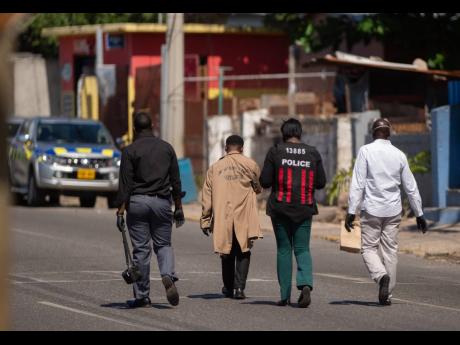Smart cities to boost crime fighting
Jamaica’s runaway crime rate has served as impetus for the full transformation of Kingston into a smart city, fuelling high expectations that heavy investments in information and communication technologies (ICTs) will deliver positive results.
“Smart cities will help with crime. It will help with the identification of criminals, will prevent the movement of criminals, [and] will track vehicles inside of areas and spaces where crime is heavy,” Director of Grid Modernization at the Jamaica Public Service Company (JPS), Hugh Hamilton, touted in a Gleaner interview recently.
The power company is at the forefront of the implementation of smart cities across the island, beginning with New Kingston, which is expected to serve as the catalyst.
A $78-million feasibility study funded by the United States Trade and Development Agency is being conducted on the area, which is the size of six square kilometres and has a population of approximately 600,000.
Implementation is set for 2026 and should run until 2029.
The project is also expected to extend to Liguanea, Half-Way Tree, Manor Park/Constant Spring, downtown Kingston, and Montego Bay in the long haul.
A figure has not yet been determined, Hamilton said, but it is estimated that it could cost billions.
He said that once the feasibility study has been completed, economic and technical assessments will be done to determine the funding needed.
Hamilton said that already, the JPS has spent US$145 million in the implementation of its smart grid technology to include smart lighting across the country, noting that this is playing a key role in crime fighting in New Kingston.
The technology is being paired with the security ministry’s Jamaica Eye initiative to increase visibility in the area at nights.
Hamilton said the smart LED-type lighting installed by the JPS “gives a clearer picture of what is being done and who is doing it”.
Smart cities use ICTs to improve operational efficiency, share information with the public, and provide a better quality of government service and citizen welfare.
The main goal is to optimise city functions and promote economic growth while also improving the quality of life for citizens by using smart technologies and data analysis.
It is expected that the use of technologies in these cities will improve the efficiency and effectiveness of infrastructure as well as address a wide variety of sectors such as security, energy, transportation, and health.
Hamilton explained that the backhaul needed by the ministry to keep Jamaica Eye going has proven to be costly, with the large volume of data being transferred to its central system.
“A feasible thing is to pool the resources of stakeholders right across public and private sectors and to see how best we can collectively respond to this specific issue, which is a direct response to fighting crime,” said Hamilton, adding that JPS’ interest is “very high” in seeing the project come together.
“The Government wants to have Jamaica Eye right across the board. In order to do that it needs a massive investment. Can we combine investments that have already been made in order to get that to them at a faster rate? That would be a huge win.”

